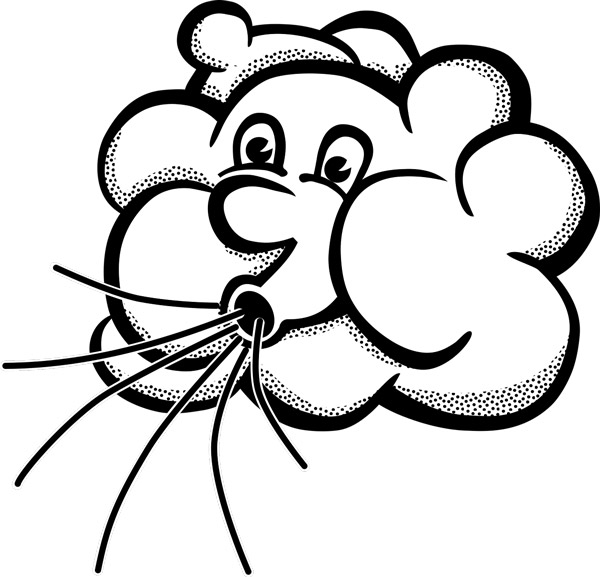Traditions, history and culture with the wind as the protagonist
The wind is a force of nature that has always fascinated human beings, in fact in the traditions and customs of many ancient and modern societies it has often assumed a symbolic and mythological meaning. The wind-related deities were considered responsible for storms and changes in the weather and their cult was closely linked to agricultural work and navigation.
In popular culture, the wind was also seen as an omen of future events and in art and literature it is often used as a metaphor to describe an uncontrollable and unstoppable force.
In a previous article we saw how the wind generates and what are the types of wind, in this article instead we will explore how the wind has been represented and revered and how the traditions related to the wind are still present in our modern society.
the wind: mythology and history
The Gods of the Wind
The wind has always played an important role in human culture and history and since ancient times it has been the subject of myths and legends, often associated with gods and spirits. For example, the ancient Greeks venerated Aeolus, the God of the Wind, who had the power to evoke and appease the winds and control storms. He was considered one of the twelve great Olympus Gods.
In Greek culture, the winds were also associated with several other minor deities, including Zephyr and Noto. In Greek mythology winds were also associated with events, places and people such as, for example, the north wind, Boreas, was associated with storm and cold.
Also in Antiquity, the Sumerians identified the wind with Enlil, the ancient Mesopotamian god of wind and storms, while in ancient Egypt we find Shu, who personified the air and the wind.
Discovering new territories
Wind also played a significant role in navigation and the discovery of new lands.
Since ancient times, sailing ships have been used to explore the seas and oceans, allowing the human being to come into contact with distant cultures and discover new lands.
The power of the wind has always inspired great minds: Leonardo da Vinci was among the first to try to create an instrument to measure its power – at the basis of the development of meteorology – or rather a primordial anemometer.
Energy from the Wind
The wind has played a very important role in the economic development of our civilisation as a primary source of energy. In fact, since ancient times, the wind has been used to operate mills and oil mills. Today, instead, we find wind turbines that use the wind to produce electricity, making a decisive contribution to the desired transition to renewable energy sources.
In general, the wind has been a constant presence in human culture and history, inspiring art, literature, technology and science, representing a mysterious, useful and precious force. The wind has been a faithful companion for the human being, pushing them towards new discoveries and opportunities, but it has also represented a challenge to be faced and overcome given its power.
Today, the wind continues to be an important phenomenon in daily life, with implications for meteorology, energy, agriculture and many other human activities. Its understanding and appreciation are important for sustainable development and the well-being of humanity.

The strongest winds: records and curiosities
The strongest wind ever recorded in history was on 10th April 1996 during tropical cyclone Olivia in Australia, with a gust of 407 km per hour.
We can then find Cyclone Pam, which hit Vanuatu in 2015 with winds reaching 318 km/h. Another extremely high wind was Typhoon Haiyan, which hit the Philippines in 2013 with winds of up to 315 km/h. These winds were so intense that they caused extensive damage and resulted in numerous casualties.
Other extremely strong winds have been recorded in some mountainous areas, such as the summit of Mount Everest, where winds can reach 250 km/h. Furthermore, the strongest winds are often recorded in stormy areas such as Antarctica or the Atlantic Ocean.
The wind is an extremely variable and unpredictable natural phenomenon, which can take on different forms and intensities depending on the weather conditions and the characteristics of the territory. The curiosities and records on wind intensity help us understand how powerful this natural phenomenon is and to take precautions to avoid damage and dangers.
Poems, films and phrases about the wind
The wind has been a source of inspiration for many forms of art, such as poems, films, songs dedicated to the wind (we talked about it in this article). In literature, the wind has been described as a symbol of strength and freedom, but also of change and uncertainty. In many poems, the wind has been described as a wild and uncontrollable force, as well as a beneficial force that cleanses the air and brings freshness.
In cinematography, the wind has been used as a metaphor to represent the uncertainty and uncontrollability of life. Films such as “The Wind” (1928) and “The Wind That Shakes the Barley” (2006) have used the wind as a symbol of change and struggle.
The wind has also been used in many phrases and idioms, such as “the wind turns” and “the wind changes“, which represent the uncertainty and changeability of life.
Furthermore, the wind has been described in many proverbs and idioms, such as “The wind blows where it wants” which represents the unpredictability and uncontrollability of the wind and of life, or “the wind is capricious” which represents its mutability.
In general, the wind has been a source of inspiration for many forms of art and represents a universal symbol for the strength, freedom and changeability of life. Its description in poems, films and sentences helps us to better understand its meaning and allows us to better appreciate this natural phenomenon.
In the art world the wind was represented in many works of art, including paintings and sculptures.
In poetry, the wind has been celebrated by many authors, here we want to quote Pablo Neruda with his “The wind on the island“:
The wind is a horse:
hear how he runs
through the sea, through the sky.
He wants to take me: listen
how he roves the world
to take me far away.
Hide me in your arms
just for this night,
while the rain breaks
against sea and earth
its innumerable mouth.
Listen how the wind
calls to me
galloping
to take me far away.
With your brow on my brow,
with your mouth on my mouth,
our bodies tied
to the love that consumes us,
let the wind pass
and not take me away.
Let the wind rush
crowned with foam,
let it call to me and seek me
galloping in the shadow,
while I, sunk
beneath your big eyes,
just for this night
shall rest, my love.
Pablo Neruda – “The wind on the island”


